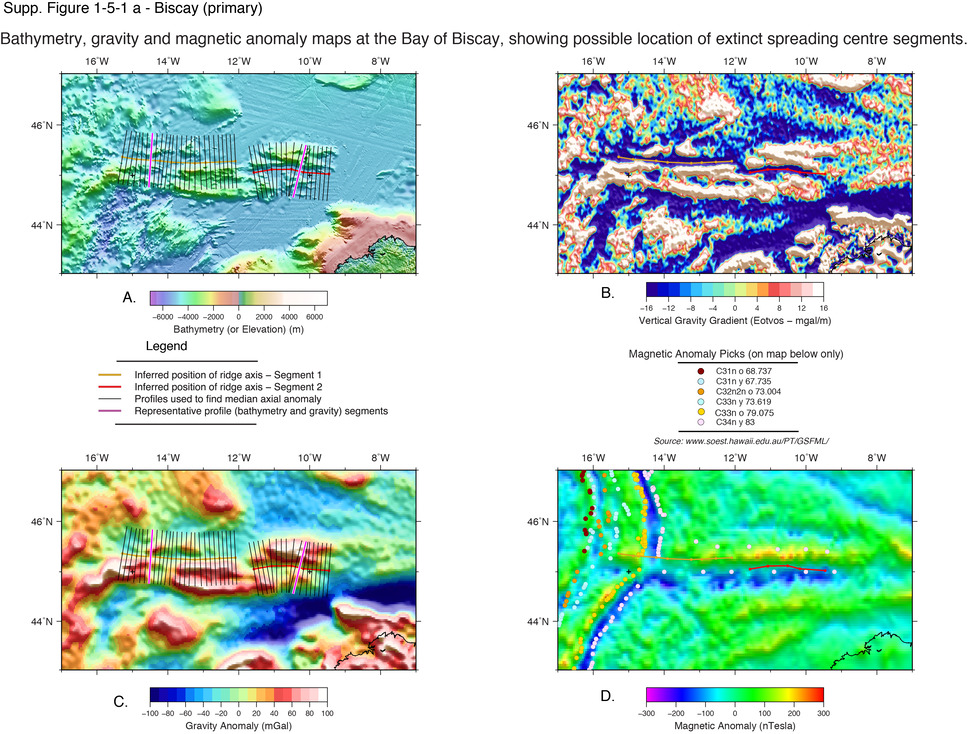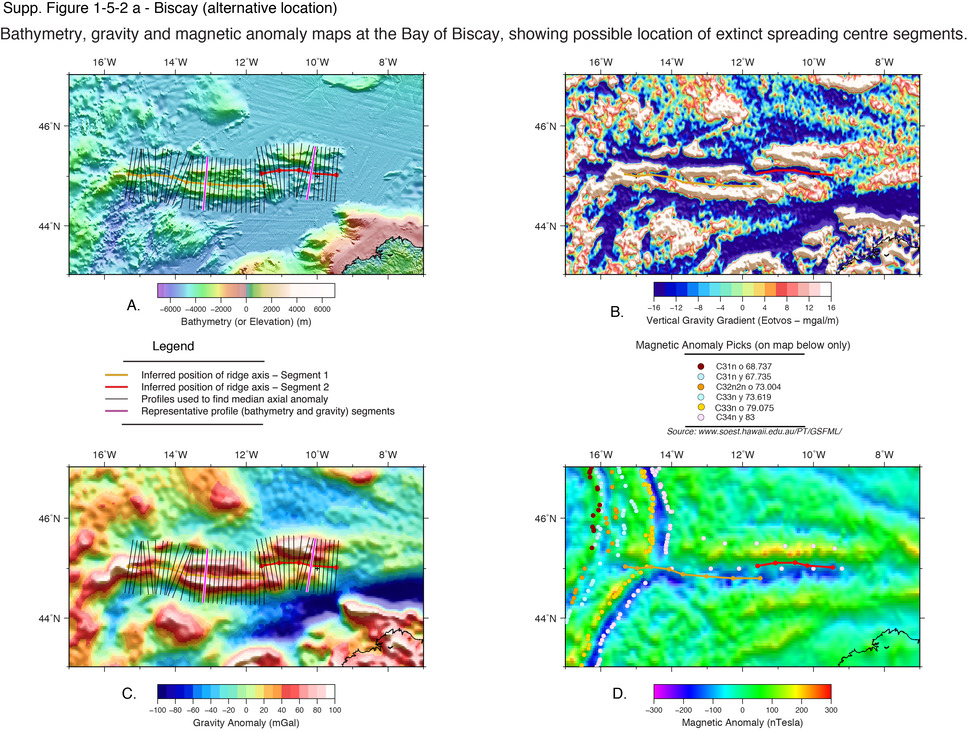| Ocean: | Atlantic |
| Spreading center type: | Large-scale MOR |
| Time of cessation: | Ca. 73 Ma, chron C32n.2n (Williams, 1975) |
| Subsequent active spreading center: | The simultaneously active Mid-Atlantic Ridge continued spreading after extinction of the Bay of Biscay ridge. |
| Cessation style: | Not constrained by available data. |
| Later deformation/volcanism | Williams (1975) considers possible later deformation during the Alpine Orogeny. |
Carol Williams reported on the extinct spreading centre within the Bay of Biscay in the early 1970s, following a period of intense geophysical studies within this region (Williams, 1975; Williams, 1973). These early works demonstrated the complex structure of the oceanic crust in the region and provided evidence for a past triple-junction (ridge-ridge-ridge) intersection in this region, from the curvature of magnetic isochrons toward the west and observation of a 'magnetic bight'. Williams (1973, 1975) suggested that there may have been later deformation of the crust during the Apline Orogeny and this may have led to the complexity of the axial ridge. Williams (1975) interpreted the youngest anomalies within the Bay of Biscay as chron C31 (ca. 69 Ma).
More recent bathymetry, magnetic and seismic reflection data from this region are reported by Sibuet and Collette (1991). They confirmed identification of symmetric magnetic anomalies in the Bay of Biscay around an east-west oriented spreading center, but identify the latest formed magnetic anomalies as C33o (83 Ma), earlier than the identification of Williams (1973, 1975). Their data suggested that the axial structure does not exhibit a characteristic extinct-spreading ridge form, and is instead comprised of a number of parallel and overlapping ridges, some with elevated seamounts, found in the vicinity of the symmetric magnetic anomaly identifications. The Bay of Biscay ridge represented one arm of a triple-junction configuration in the north Atlantic between the Eurasian-North-African and-North American plates, with a large transform fault generated transtension at the Mid-Atlantic Ridge which represented the other spreading arms of the triple junction (Sibuet and Collette, 1991).
Opening of the Bay of Biscay and timing of extinction is thought to have been closely related to rotation of the Iberian peninsula, which remains controversial and contested at this time (Barnett-Moore et al., 2016). Cessation is also likely to have been impacted by this motion.
The Bay of Biscay is a structurally complex region, yet symmetric magnetic anomalies formed by north-south oriented seafloor spreading prove that an extinct spreading axis in this region. It remains difficult to conclusively demonstrate the precise location of the extinct spreading center due to the complex structure of the Bay of Biscay and uncharacteristic morphology. Our profiles across axial segments unfortunately do not assist in resolving this controversy.
Barnett‐Moore, N., Hosseinpour, M. and Maus, S., 2016, Assessing discrepancies between previous plate kinematic models of Mesozoic Iberia and their constraints, Tectonics, v. 35, no. 8, p. 1843-1862.
Sibuet, J. -C. and Collette, B. J. 1991. Triple junctions of Bay of Biscay and North Atlantic: New constraints on the kinematic evolution. Geology, 19, pp. 522-525.
Williams, C. 1973. A Fossil Triple Junction in the NE Atlantic West of Biscay. Nature, 244(5411), pp. 86-88.
Williams, C. 1975. Sea-floor spreading in the Bay of Biscay and its relationship to the North Atlantic. Earth and Planetary Science Letters, 24, pp. 440-456.





